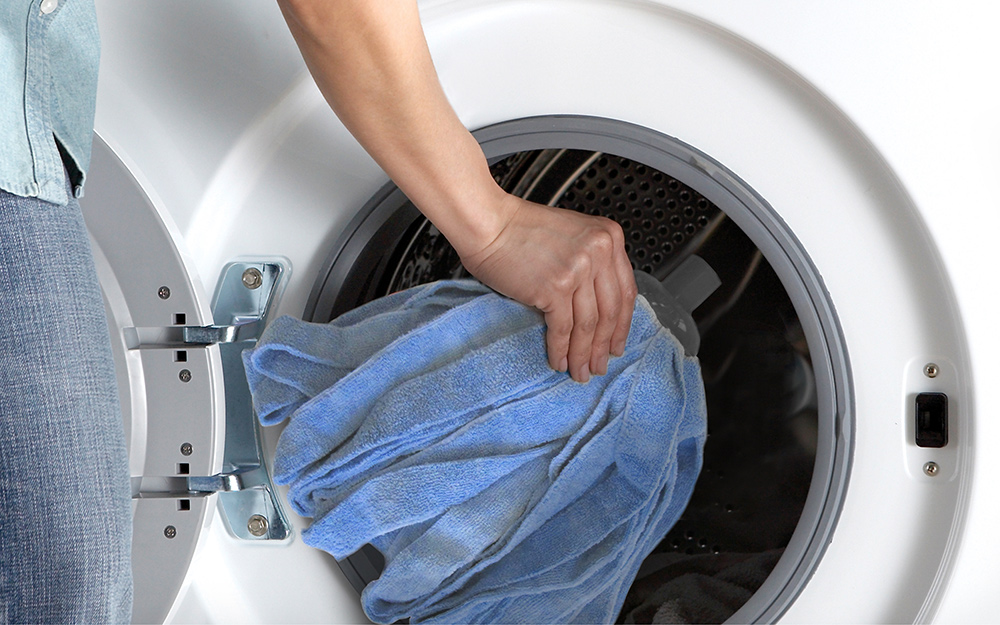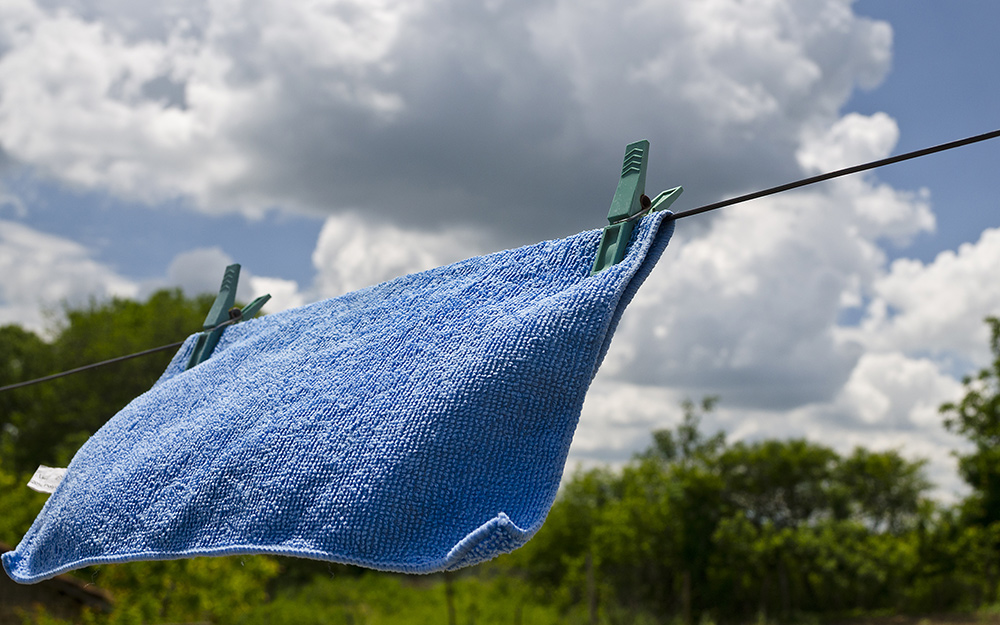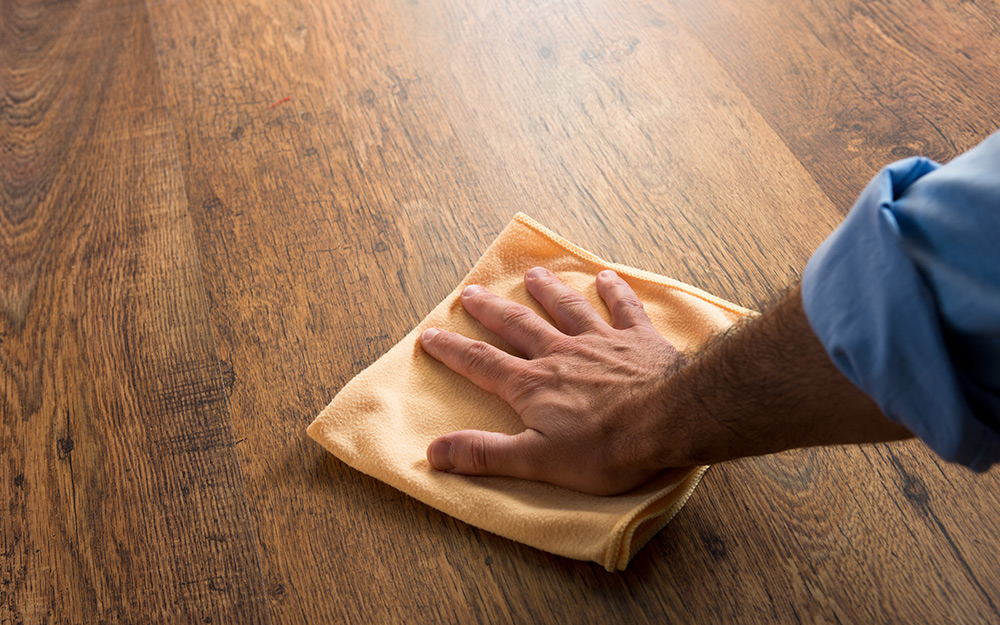How to Clean Microfiber Cloths

Last updated September 7, 2023
Microfiber cleaning cloths are some of the best cleaning tools around. Effective and reuasble, these cloths can replace mounds of paper towels in your cleaning routine. However, the best microfiber cleaning cloths will only work well if you take care of them. This guide teaches you how to clean microfiber cloths so that they last and keep cleaning efficiently.
Difficulty:
Beginner
Duration:
Under 2 hours
Table of Contents
Washing Microfiber Cloths
Drying Microfiber
Maintain Your Microfiber Cleaning Cloths
Washing Microfiber Cloths

When washing microfiber cloths, avoid harsh soap, fabric softener or detergent with laundry additives, including fragrances and fabric conditioners. These coat the fibers of the cloth and make them less effective for cleaning. Lightly dusty or dirty microfiber cloths can be hand-washed.
Hand-Washed:
- Shake out the fabric outdoors or into a trash bag to release excess dirt.
- Run a basin of cool or warm water.
- Add cloths and agitate by hand. Hand scrub any heavily stained areas.
- Soak the cloths for 15 to 20 minutes, then agitate again.
- Rinse the towels thoroughly under running water.
- Wring out excess water.
Microfiber cloths can be machine-washed for convenience or if the fabric is excessively dirty or stained. Do not wash microfiber cleaning cloths with other types of fabric. Other fabrics can ruin the fibers of your microfiber cleaning cloths, abrading the fibers and leaving lint on the microfiber surface. In particular, avoid mixing cotton fabrics with microfiber.
Machine-Washed:
- Shake the microfiber cloths outdoors or into a trash can to release excess dirt.
- Machine wash a load of microfiber cloths in cold or warm water. Do not use hot water.
- If using detergent, choose a gentle detergent with no scent or laundry additives. Use a small amount of detergent, no more than one or two teaspoons.
- If the microfiber towels have an odor that needs to be eliminated, add a tablespoon of white vinegar to the machine load.
- Allow the machine to complete half of the agitation cycle, then stop the cycle and allow the load to soak for 15 to 20 minutes.
- Resume the wash cycle and allow it to complete.
Tip: Unscented detergent may contain additives to cover the scents of soap ingredients, while “free” detergents are generally free of additives such as color, scent or fabric-conditioning ingredients.
Drying Microfiber

Microfiber cloths dry quickly, whether you choose to air-dry or machine dry.
Air-Drying:
- Shake out the microfiber cloths and hang to dry in direct sunlight.
- If hanging indoors, make sure you hang them in an area with good air circulation.
Machine Drying:
- Thoroughly clean out the dryer lint trap both before and after drying microfiber cloths. A dirty trap can spread dryer lint and deposit it on the microfiber, damaging the fibers.
- Do not add dryer balls or dryer sheets to the load.
- Set the dryer to a low heat or an air-dry cycle.
Maintain Your Microfiber Cleaning Cloths

To maintain your microfiber cloths, shake them after use to dislodge dirt, then rinse thoroughly. Store microfiber cloths together, separate from other types of cleaning cloths or materials. When using microfiber cloths, avoid cleaning chemicals. Most microfiber works better with water only. If you do want to use chemicals, use very small amounts. Do not iron microfiber cloths; excessive heat can melt the fibers.
Microfiber cloths make quick work of most cleaning tasks because of their efficiency in picking up dirt and dust—reducing the number of cleaning products you use. Invest in good microfiber cleaning cloths and care for them properly to extend their life and save money over the long term. Looking for a product to complete your project? The Home Depot has options to deliver online orders when and where you need them.


























